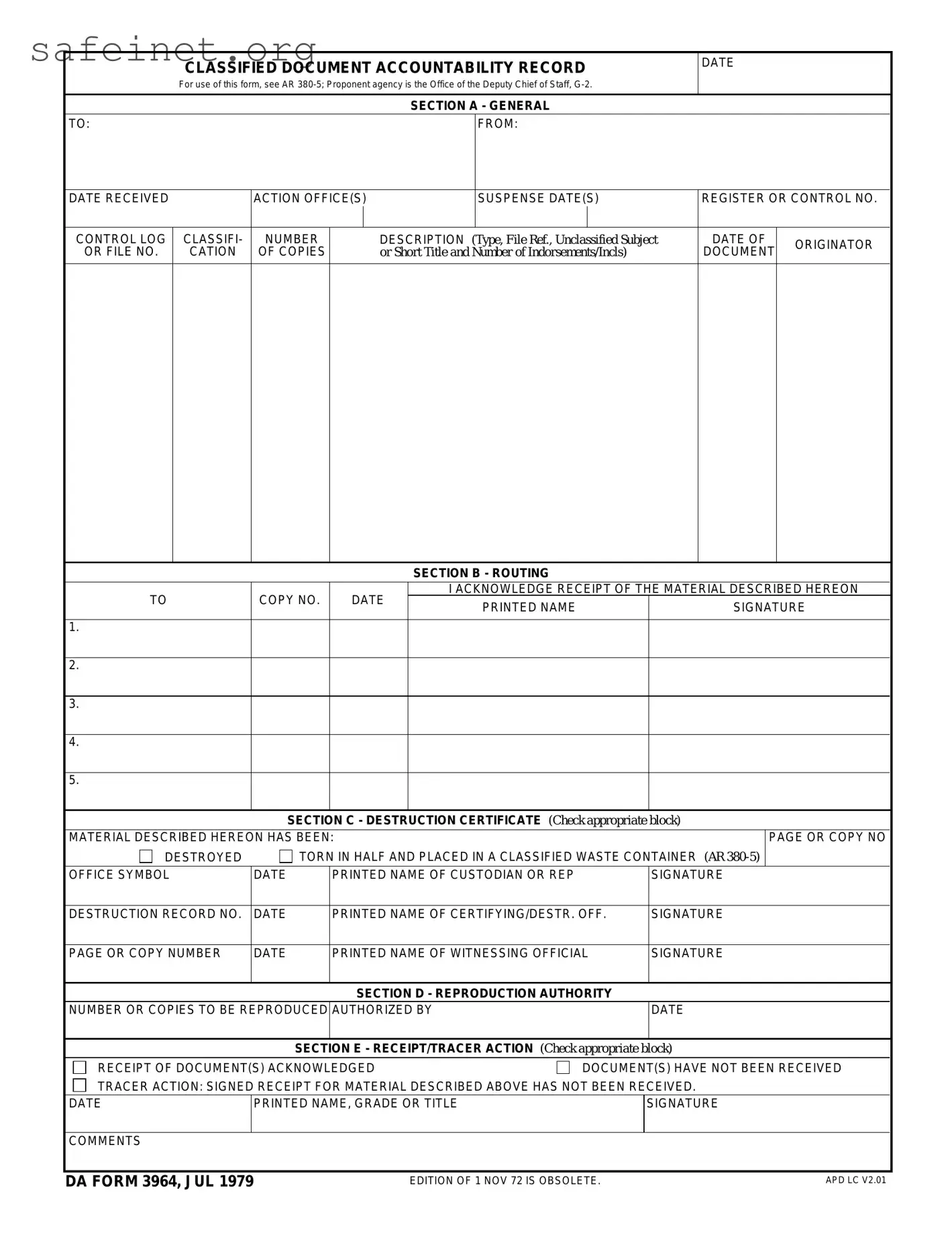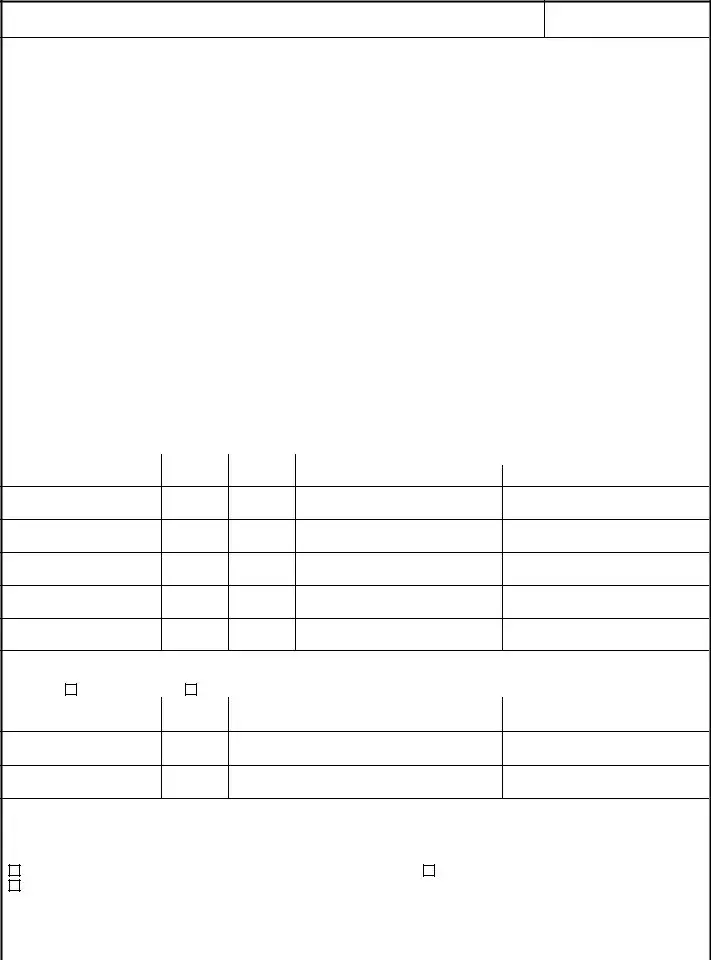The DA Form 3953, known as the Purchase Request, is utilized by the U.S. Army for requesting supplies or services. Similar to the DA 3964, which tracks classified documents and their accountability, the DA 3953 focuses on ensuring that specific guidelines are followed when procuring materials. Both forms emphasize accountability and clear documentation processes to maintain an organized record system, though one addresses classified information while the other is directed toward procurement needs.
The DA Form 2062, the Hand Receipt, is another document that shares similarities with the DA 3964 in terms of tracking. It is used to account for property. Just as the DA 3964 provides a receipt for classified documents, the DA 2062 serves as a handover record for items issued to individuals, ensuring that responsibility is clearly defined. Both forms facilitate a chain of custody and help in audits and inventory control, fostering transparency and responsibility.
Next, we have the SF 700, or Security Container Information. This form is used to document key information about safes or containers that hold classified material. Like the DA 3964, the SF 700 ensures that there is oversight and management of sensitive items, detailing ownership and contents. Both documents are crucial in maintaining the security of classified materials, aligning with federal regulations to mitigate risks associated with unauthorized access.
The DA Form 2627 is the Report of Proceedings Under Article 15, UCMJ, and it helps to document non-judicial punishment within the military. While this form addresses disciplinary action, it mirrors some operational aspects of the DA 3964 in terms of documenting processes and maintaining accountability. Both forms require signatures and acknowledgments, underlining the importance of formal procedures in the Military Justice System.
The DA Form 2823, known as the Sworn Statement, is utilized when an individual provides testimony. It shares the emphasis on documentation with the DA 3964, ensuring that accurate and official records are maintained for review. Like the DA 3964, the DA 2823 includes signatures to affirm the truthfulness of the statement, thereby establishing accountability in a manner similar to documented receipt and handling of classified information.
The SF 312, Classification Agreement, serves as a legal acknowledgment of an individual’s responsibility to protect classified information. This form is akin to the DA 3964 in that both recognize the handling and safeguarding of sensitive documents. The SF 312 ensures the individual is aware of the consequences of leaking information, just as the DA 3964 tracks the flow of documents through various stages of handling and storage.
The DA Form 2404 is the Equipment Inspection and Maintenance Worksheet. This document, although focused on equipment rather than classified information, shares similarities in accountability and record-keeping. The DA 2404 ensures that all equipment is properly maintained and accounted for, paralleling the DA 3964’s goal of consistent tracking of sensitive material through organized and detailed documentation.
Furthermore, the DA Form 1059 is the Academic Evaluation Report, which provides an assessment of a soldier’s academic performance. While it focuses on educational achievements, it parallels the DA 3964 in its function of maintaining a formal record regarding important activities. Just as the DA 3964 documents the handling of classified materials, the DA 1059 upholds standards of accountability in the context of training and education within the military.
Lastly, the DD Form 214, or Certificate of Release or Discharge from Active Duty, serves as a crucial document that summarizes a service member's military history. Similar to the DA 3964, it focuses on documentation that verifies significant experiences and accomplishments. Both forms serve vital informational roles; one tracks classified documents while the other provides a comprehensive history of a service member’s military service, enhancing transparency and accountability for personnel records.

